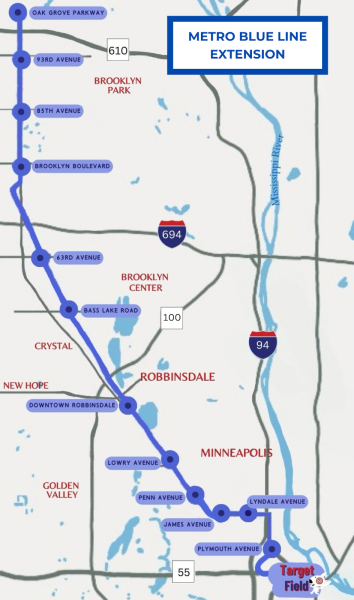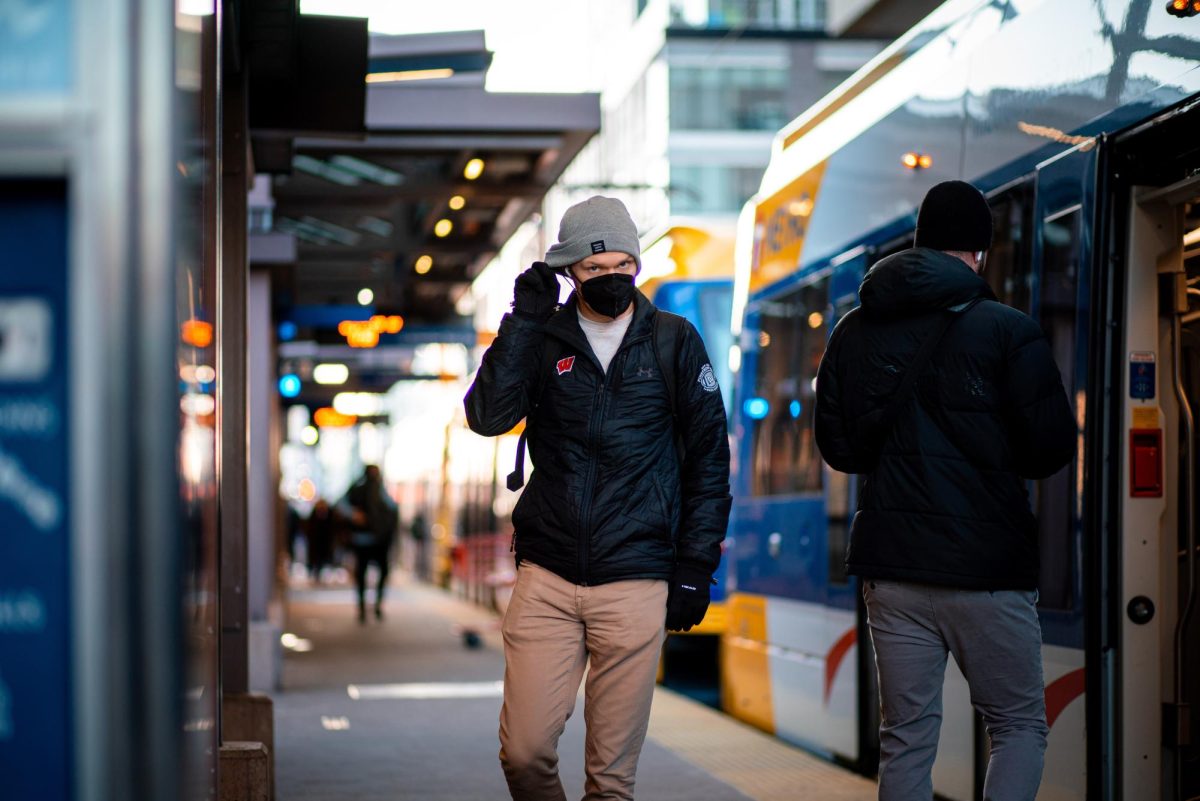At a community engagement meeting Wednesday, Metro Transit leaders announced the Metro Blue Line Train Extension project which would increase light rail access to marginalized communities by extending the lines into North Minneapolis, Brooklyn Park, Crystal and Robbinsdale.
The proposed project would connect downtown Minneapolis to communities in North Minneapolis, Brooklyn Park, Crystal and Robbinsdale, stretching 13.4 miles of track and be finished by 2030. The official route will be chosen in 2025.
The project provides an opportunity to invest in Black, Indigenous and people of color (BIPOC) communities and reduce regional imbalance, according to Kyle Mianulli, communications administrator for the Blue Line.
The new track will have 12 stations, starting from the Target Field Station. The exact route is not yet finalized, as organizers are still planning how to best fit the different communities, according to Mianulli.
Community engagement is a big part of this project, Mianulli said.
The project has sought community input through media campaigns, arts-based engagement like mural painting, 3D models of trains, a dress printed with the map of the Blue Line extension and having other languages available, Mianulli added.
The corridor in which the expansion will be going through is very diverse and has been affected by redlining and systematic racism, Mianulli said. This project will help minimize the effects of displacement and gentrification.

Redlining is the practice of denying privileges to people in certain areas based on race or ethnicity.
Nkongo Cigolo, public involvement manager for the Blue Line Extension Project, said the organizers consulted anti-displacement research and recommendations when designing the extension.
“An anti-displacement working group had been meeting for over a year to look at various policies related to anti-displacement and look at the various needs,” Cigolo said. “They ended the first session with a set of recommendations.”
Residents can make comments about the extension using an interactive map on the Blue Line Extensions’s website.
Bojan Misic, a manager of design and engineering on the project, said Lowry station is changing from a four-story-high platform to ground level in a Metropolitan Council meeting Wednesday night.
“It does provide better visibility being down at ground level,” Misic said. “Every time we have more people around, it’s safer.”
John Sutter, the community development director for the City of Crystal, said this project will be a benefit and has requested changes to better suit the city.
It allows access to businesses and the workforce, as the retail vacancy rate for Crystal is under 5%, Sutter said.
An article released by the Council on Wednesday said the current cost projection for this project is $2.2 billion.
To account for unknown risks and conditions in the early design phase, the federal government requires an addition between 35% and 45%, leading to a total preliminary cost of between $2.9 billion and $3.2 billion.
Mianulli said the initial process of this project started in 2011, with big changes in 2020 adding a route into northern Minneapolis.
This summer, a municipal consent process will start which will include local review and feedback on design. The Minneapolis City Council will vote on the project design and route before Mayor Jacob Frey’s approval.
Project staff in partnership with the Federal Transit Administration will publish the Supplemental Draft Environmental Impact Statement this year that highlights potential project impacts and opportunities.









Javaris
Mar 29, 2024 at 9:51 am
If lack of security remains there will be consistent issues for existing and new to come stations. There are ways to reducer this but it needs to be implemented while building to reduce the cost of implementing after. The council needs to secure to platforms they have already before pursuing to build out more. If you may need ideas, I can be reached. I do have some ideas, from being a train rider in the city of Chicago.